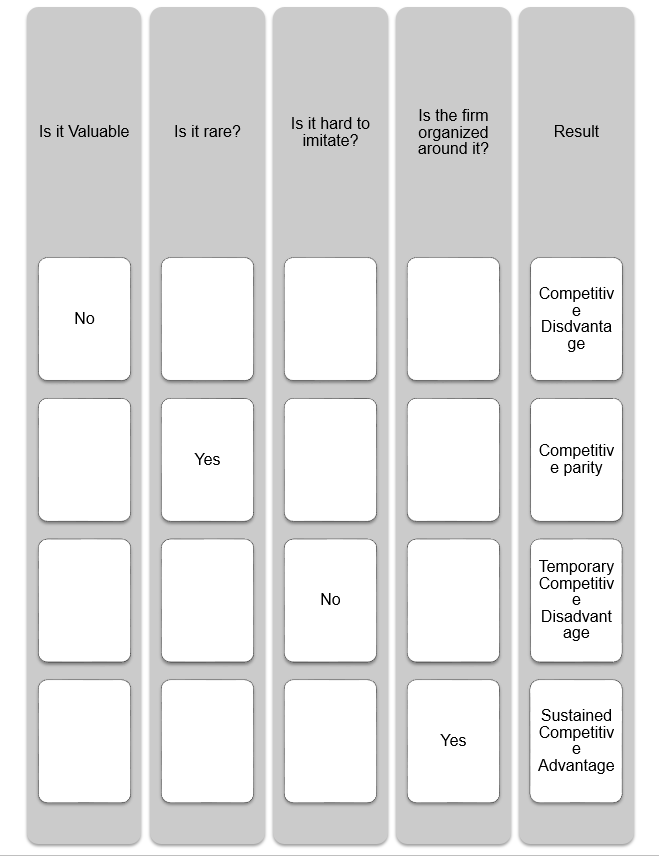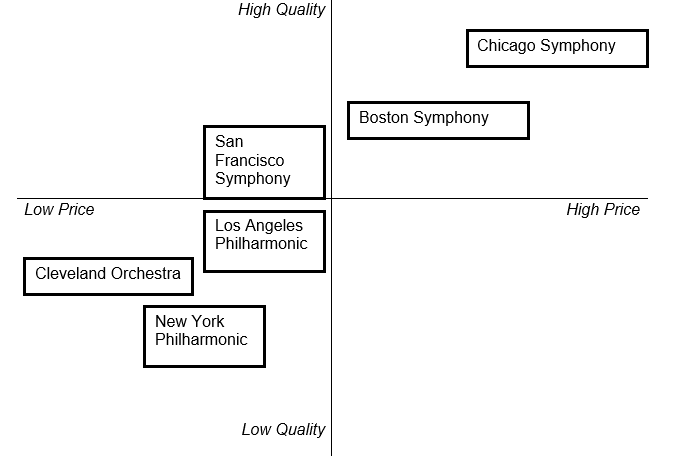Abell’s Framework
To remain competitive it is essential for companies to focus on strategic planning. To do so, it is critical to look into three questions:
- who are the customers?
- how the customer’s need can be satisfied?
- what technologies can be used to meet the customers’ demands?
Customer needs that can be identified for SFS are – artistic excellence of the music they create, excellent performances through concerts as well as new media, and award winning reputation. These three basic needs are to be satisfied. The next question that arises is who the customer groups are. The customer groups for SFS are – the older generation of audience who prefer the traditional music and the younger generation of audience who prefer improvisation and innovation. Therefore, Abell’s framework identifies two different groups of customers who have different needs. Therefore, the approach taken to cater to the needs of these two groups will be different.
The traditional group of the audience would like to attend live concerts while the younger generation would prefer live streaming of the concerts online. Thus, to satisfy the needs of the first consumer group, SFS must perform traditional concerts while for the second group, they must adopt contemporary music and mode of broadcasting, to promote live shows to the younger audiences.
Generic business Strategy
SFS is a company that creates music. The generic strategy of the company will be to perform and propagate its musical talent. The product that they sell is their excellence in music. The generic strategy will be to sell their product i.e. music. Therefore, the generic strategy of SFS has been differentiating themselves from other orchestras in creating music. The focus of SFS has been on differentiating its services.
Functional strategy
The key functional strategy are related to the financial strategy and marketing strategy of the company. Marketing the busienss to the younger generation and capturing a large untapped market of music lovers who have not developed the taste for classical concerts must be done. In order to reach out to this market, educating the audiences is essential. Further, increasing involvement of the youth in the company is vital to market their services to the younger generation.
The financial strategy of the company should aim at increasing revenue to avoid an operational deficit.
Corporate directional strategy
The main problem faced by SFS is its financial crisis. The continued deficit for the past five financial years has created additional problems with the labor unions. The aim of the company should be to boost:
- sale of tickets in concerts,
- increase revenue through other forms of marketing such as internet radio,
- build an active school of music that would teach young musicians as well as open an avenue for revenue.
The central area where SFS incurs losses is in its concert related revenue and expenses. In 2013, the concert related expense was $ 52,715 while the revenue earned through concerts was only $ 26,251.
Building blocks of their competitive advantage
The main disadvantages that SFS faces in order to build their building block are:
- decline in demand and sale for concert tickets,
- inability to attract audiences even for reputed San Francisco Girls Choir (SFGC),
- increasing expenses vis-à-vis sales.
Therefore, SFS must try to find new avenues from where revenue can be earned. Concerts are the most expensive component of SFS’s financials (74%) and it is the largest part of revenue earnings. However, the dwindling demand for concert tickets has reduced the overall revenue, thus, creating a deficit. SFS must aim at developing demand for its concerts through innovative methods.
SWOT Analysis
Strength
The SWOT analysis demonstrates that the primary strength of the company is its artistic reputation. The conductor and the musicians have received critical acclaim. SFGC’s reputation has grown due to its Grammy Award winning performances. SFS has been ranked among the top-tier orchestras in the US.
Weakness
The main weakness that the company faces is its financial troubles. The company’s financial report suggests that it has posted operation deficit since 2007. In nine out of the last twelve seasons, SFS has operated on deficits. Continued losses have been one of the financial problems faced by many orchestras in the US, like Philadelphia Orchestra that filed for bankruptcy in 2011. In 2010, 9 out of the top 10 major orchestras were reported to have been operating on deficits. Further, problems of the unions and strikes have hindered concerts and performances of the company that may affect their reputation. The problem with the union and recurring strikes has been due to the financial issues of the enterprise.
Threat
The monetary setbacks have resulted in constant lockouts, strikes, and cancelation of concerts. In March 2013, SFS Company was experiencing a major strike. The primary cause of the standoff was pay and health-care benefits. According to the organization’s officials, SFS musicians were seeking a pay rise to be at par with their counterparts in other orchestra groups in the United States. Further, the financial crisis in the US has led many companies to bankruptcy. One main reason is reduced consumer spending that has resulted in reduced turnout in concerts. Reduced sale of tickets for concerts, which is the primary source of revenue for SFS, has affected the financials of the company. The reduced sale may be attributed to low spending tendencies of consumers.
Opportunities
The award-winning performances of SFGC, their reputation, and media coverage will be an excellent opportunity for the company. The company has gained public support as well as the immense contribution from its donors to remain afloat. In 2013, the donation to SFS was $ 35.5 million that exceeded the revenue earned by the company.
VRIO Analysis
The VRIO framework (Table 1) shows that SFS has no competitive advantage, as the service it provides does not create value to the company. Due to the incurring losses and the company has lost its competitive advantage. Further, the enterprise’s continued losses will hamper its future operations.

Strategic Groups and Perceptual Map
The main competitions SFS face within the country are Chicago Symphony, Boston Symphony, Cleveland Orchestra, Los Angeles Philharmonic, and New York Philharmonic. These orchestras feature in the world’s best twenty bands list. The perceptual map is provided in Table 2. The map shows that SFS provides moderately high-quality services, which are lower than Boson and Chicago Symphony. However, the price of its concert tickets is moderately higher.

Recommendations
The recommendations for SFS, based on the strategic analysis of the company’s operations, planning, and strength and weaknesses, are as follows:
- SFS must reduce its spending on concerts. The financials of the company shows that more than 70% of its expenses are made on concert preparations. However, the revenue earned from concerts does not cover the cost. Apparently, concerts create a financial burden on the company. The donors fill up the economic gap. However, the number of donors is also declining.
- The payment structure of the musicians must be altered. As the unions become an obstacle for the orchestras, increase salary payments has become a financial concern. Changing the salary structure of the musicians can resolve the issues with the labor union.
- Change the way concerts are arranged. Managing a concert with a full orchestra implies greater fixed cost incurred by the company. However, if smaller concerts are organized, with the aid of guest musicians, this will reduce the cost of a concert as well as fixed players. Further, orchestras must concentrate on diversifying their choice of music, which will attract a new audience.